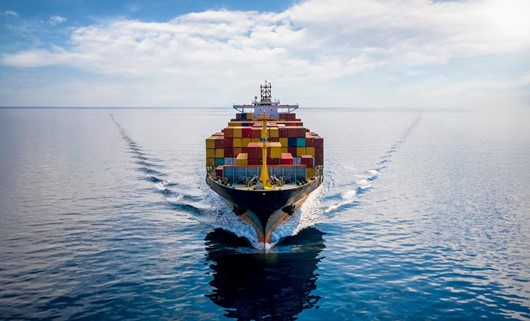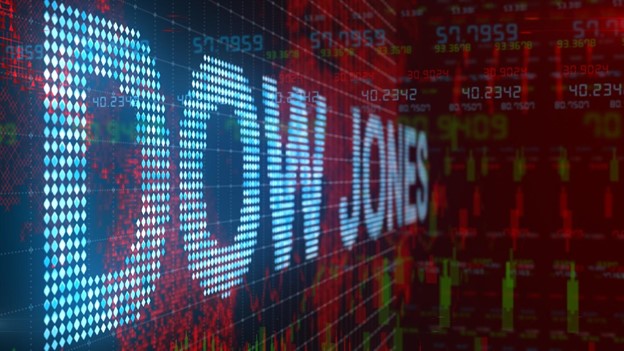There has been one common theme in first-quarter earnings reports- Shipping costs are elevated. This has been detrimental to gross margins for most companies. The Dry bulk shipping industry though has thrived.
We want to put a couple of shipping names on your radar.
The dry bulk industry is cyclical as it is tied so closely to the global economy’s health. It is difficult to manage as companies need to build and maintain ships to manage capacity which can be costly. This leads to bouts of oversupply that can wreak havoc on poorly managed balance sheets.

It has taken the industry a decade to recover from its last round of oversupply. The buildout plagued the market and depressed shipping rates. Several shipping firms declared bankruptcy over that period.
Fast forward to today and we have an industry thriving as freight rates remain elevated. The strong environment always has investors looking around the corner at what could disrupt this environment.
Market participant concerns center on slowing economic growth in China and lower grain volumes from the Baltic region in 2022. The lower volume should be offset by increasing ton-per-mile demand. In fact, the forward market prices remain elevated through the back end of the year.
Shipper bulls argue that the industry has followed a similar path to the energy space. The group’s disciplined approach and aversion to chasing capacity have led to improved balance sheets. Moderating demand with limited fleet growth should result in further tightening of the supply/demand imbalance and support strong pricing for the next few quarters.
The Baltic Dry Index, which tracks dry-bulk shipping rates, ranged from as low as 400 points in May 2021 to more than 5500 by the fall of 2021. The China COVID shutdowns have increased the volatility. Futures contracts are pointing to higher prices as the country is expected to re-open.

The BDI rose 25 points on Monday to 3,369, the highest since December 8. The capsize index, which tracks iron ore and coal cargos, increased 1.7% to 4,602, suggesting demand from China is slowly returning. China will proceed with infrastructure projects to try and boost growth in 2022.
Deep-sea freight costs have been a good proxy for pandemic-related supply chain problems.
According to investment firm Miller Tabak. deep sea freight costs rose 96% in April, the biggest increase since 2003. Spikes in this metric have led to surges in U.S. consumer inflation. A 32% increase in February 2021 and a 42% increase in September 2021 both proceeded surges in inflation rates.
The data suggests consumers should prepare for another couple of months of elevated prices.

Here is a list of shippers that you should consider for your portfolio. While the stocks are likely to see a pause due to recession fears, investors can still collect a healthy dividend. The key for this cycle is that most of these shippers have better balance sheets which should allow for minimal impacts to payout ratio in the case that we do indeed see a recession.
Genco Shipping (GNK)
GNK has 44 dry-bulk ships which are used to haul large quantities of commodities. It ships iron ore and coal in its massive Capesize vessels. Smaller Ultramax and Supramax vessels transport grains, cement, fertilizers, and other bulk commodities.
The company has streamlined costs and is now running an all-in daily cost of running its ships at around $8,100. Peers generally run above $10,000 due to higher interest and debt repayment costs.
Genco parlayed the lower costs and improved cash flows to clean up its balance sheet. It implemented a new dividend policy that will tie dividend payouts to quarterly cash flow.
It declared its first full dividend of $0.79 under the new plan. This compared to just a 5-cent payout in the year-ago period. This gives GNK a healthy 13% dividend yield.
The company will need to prove that its new dividend strategy is sustainable. With $49 million of cash and $222 million available on its revolver, GNK should have ample liquidity to maintain this strategy. Its Loan-to-Value (LTV) is only 12% (approx. $141 million net debt) which is the lowest among its peers.
GNK trades at 3.6x EV/EBITDA, a 13% dividend yield, and 13% discount to Net Asset Value which is lower than the industry average of 6.1x EV/EBITDA, 17% dividend yield, and 8% NAV premium.
The stock is attempting to breakout above the $35 level. Recession fears may keep this name capped but investors will still be able to collect a favorable dividend yield.
Eagle Bulk Shipping (EGLE)
The company operates dry bulk vessels that transport iron ore, coal, grain, fertilizers, steel, cement, and forest products. It owns a fleet of approximately 55 vessels.
EGLE remains highly leveraged to the spot market with each $1,000/day increase in spot adding an estimated $19 million of cash flow or $1.50 to annual EPS.
The company recently reported Q1 EBITDA of $85 million which missed expectations. Higher-than-expected operating expenses related to an increase in repairs and drydocking in the quarter.
EGLE declared a $2.00/share dividend for Q1. Based on a 30% payout, EGLE’s yield is approximately 11%.
The cash breakeven for EGLE is $13,291 per day which should allow EGLE to generate significant positive cash flow given its positive exposure to spot prices.
The company has $396 million of debt outstanding and no debt maturities until 2026. With $83 million in cash and a $100 million available on an undrawn revolver, the company should be able to sustain its dividend for the foreseeable future.
EGLE is trying to break out above the $70 level. The stock may be rangebound in the $60-70 area while the market debates a potential recession. Investors receive an 11% dividend yield while we wait for more data.
Golden Ocean Group (GOGL)
The company operates dry bulk vessels in the sport and time charter market. Think of this name as a leaser like CH Robinson (CHRW) in the trucking market.
A key metric for GOGL is its operating day utilization. The shipper has secured 78% of second-quarter Capesize operating days at $28,300 per day and 15% of its third-quarter at $38.200 per day. It has fixed 77% of its Panamax operating days at $27,500 per day and 33% of third-quarter Panamex operating days at $34,900 per day. This provides ample earnings visibility and projects $150 million of net cash flow over that two-quarter period.
The company remains highly leveraged to the spot market. Each $1,000 per day rise in spot prices translates to approximately $30 million of cash flow per annum.
The stock trades at a correlation to spot markets. The recent rally in those prices allowed GOGL to breakout above the $13.50 level. Holding above that area will be key for the near term.
The dividend yield for GOGL is a whopping 22% but that may not be sustainable if we see spot prices start to cool.
Star Bulk Carriers (SBLK)
The company transports a range of major bulks including iron ore, coal, and grains as well as bauxite, fertilizer, and steel products. It has a fleet of approximately 128 vessels.
The company carries a healthy 23% dividend yield. Again, this may not be sustainable over the long term but pricing suggests that it can maintain this payout for the next few quarters.
The stock edged above the $32 area. Holding above this level in a tough environment is paramount. It is more likely that the stock will bounce around in the $28-32 area. Again, investors can collect the dividend to offset this pause.



